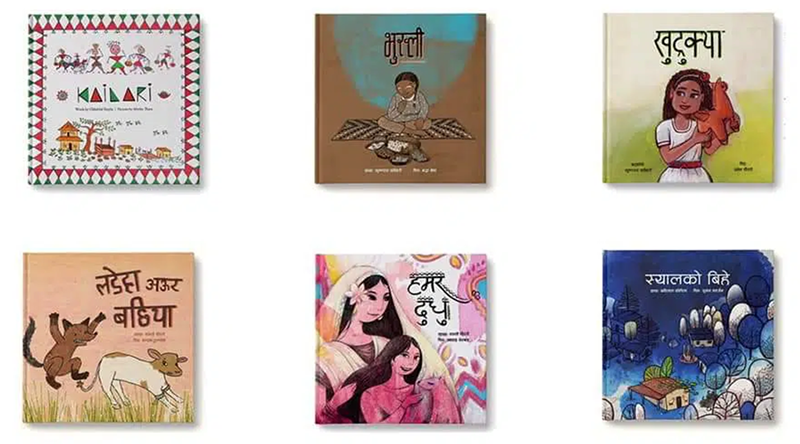How long has it been since you have spent time reading a text, a book or a newspaper? We spend the day moving quickly from one WhatsApp to another, we read emails at lightning speed and, for information, at most, we skim (because nobody reads entire pages any more) the headlines of the newspapers on the internet or we read a newsletter that summarises them. You will probably not read the last lines of this text.
Our ability to pay attention and concentrate on reading is decreasing in inverse proportion to the amount of information our society is able to generate. We are losing the habit of reading and reading comprehension and many children are not even developing it. As we explained in this post 70% of 10-year-old students are not able to read and understand simple text; and this figure increases substantially in the most vulnerable regions (80% in Latin America and the Caribbean, 78% in South Asia and 89% in Sub-Saharan Africa).
Reading comprehension is an essential skill for living in the information society. The fact is that knowing how to read goes far beyond the ability to put letters and words together. Reading comprehension is the ability to understand what is read; to identify the central elements of a text, to interpret it and to give our personal opinion on it.
Developing reading comprehension requires perseverance and exercise because it is not innate. In the same way that, to learn to solve equations, children must master the basic operations of addition, subtraction, multiplication and division, being able to understand a text involves a lot of reading. Through this, the child will be able to develop and store in his or her mental archive the different schemata that will allow him or her to understand the new texts. It is necessary to learn to get information from the text and to be able to question it. To ask questions about it. With each new reading, these outlines expand.
To do this, in addition to basic literacy, children need access to books and reading in their home languages, and this is something that, in many countries, is not easy. At least until now. Because this is one of the areas where digitalisation can help education in vulnerable environments.
In the following lines, we offer five digital applications to acquire and foster a love of reading and develop reading comprehension.
Reading comprehension is the ability to understand what is read; to identify the central elements of a text, to interpret it and to give our personal opinion on it.
Odilo, digital reading that adapts to your level
Odilo is a digital learning management platform with more than three million titles available in various formats (eBooks, Audiobooks, magazines, press…) in 40 languages. It also uses artificial intelligence to measure and improve the learning process and reading comprehension. Thus, depending on the level, tastes and development of the student, we can recommend other titles to continue. This technology makes it easier for parents and teachers to monitor and support the children who use the platform. If you want to know more about Odilo, here we have a short interview with its CEO.
Canva: learning to question a text
Why do you think we still love classic stories? What wolves can we find in today’s world? Who was Poseidon? Why is it important to defeat the Minotaur? What was it like when Galileo Galilei was born? Canva is a website of simplified graphic design tools that offers 80 reading comprehension exercises for children to advance their reading comprehension skills. Reading exercises include classic stories, Greek mythology and important historical figures. In addition to the texts, the tool provides questions to help the reader think about the content of what they have read and to relate it to their context and other knowledge.
Create a world of readers with Worldreader
Did you know that 61% of children in vulnerable communities do not own even one book? Worldreader aims to help these children who are unable to access reading. And it does so by combining its enormous digital library (with almost 6,000 books in 52 different languages), with technology (smartphones, tablets, e-readers…), through which it distributes its catalogue, and support programmes for teachers and parents. Since 2010, more than 21 million people have benefited from its readings in 100 different countries.
Let’s Read Asia: stories in 50 languages
Consider Nepal, a country with more than 123 different languages. Publishing a book in one of those languages is not profitable for any publisher and too expensive for local organisations. This means that many children in the world are unable to cultivate their love of reading by reading stories in their own language. To solve this problem, The Asia Foundation created Let’s Read an unprecedented digital library with books in 50 Asian languages as well as English.
Spotify: the music of books
No. We have not gone mad. The popular digital music player app can also be used to develop young people’s reading comprehension by tapping into their musical interests and their compulsion to make playlists. The idea was given to us by an ingenious Brazilian teacher who used Spotify in her literature classes to make the reading of a Brazilian literature classic more motivating for her students. As a class assignment, the teacher asked them to create a playlist of songs that one of the main characters in the play would listen to. Of course, they had to motivate their choice and then explain it to the rest of their classmates. Analysing the lyrics of particular songs and interpreting their meaning is also another great way to use music to raise students’ reading comprehension levels.
Booktrailer: read, imagine and create a video
More than an application, the booktrailer applied to the school context is a project in itself. A booktrailer is a short promotional video used to introduce a particular book. In this case, the idea is to use the students’ love of audiovisuals to get them to reflect on a reading and make a short video in which they tell us what the book they have read is about and what they think of it. The Booktrailer is not only an excellent tool for them to think about the story they have read, but also allows them to develop their creativity, connect with knowledge from other subjects and learn how to use digital publishing and editing resources.
**Foto de portada Pch.vector-Freepik.






